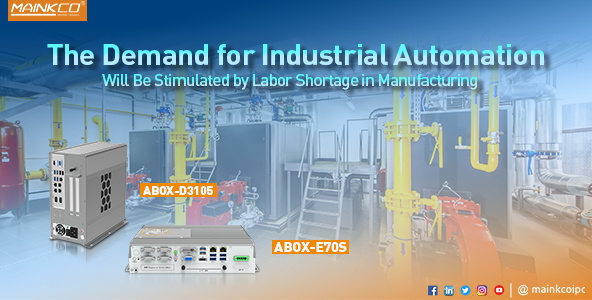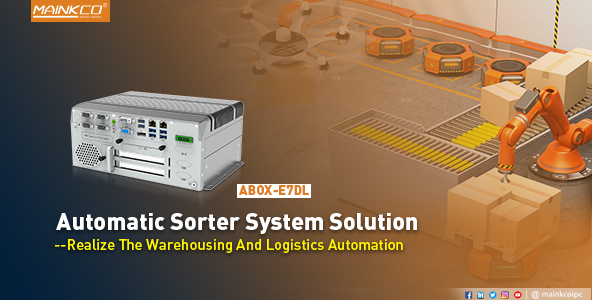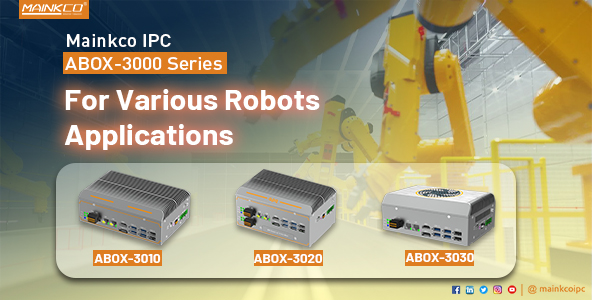In the next 10 years, China will see the biggest “retirement wave” in history. The post-60s generation (after retirement at the age of 60) is retiring at an average rate of 20 million per year. Many of them switch to the second half of their retirement life at the age of 50. Young people are reluctant to work in factories, more migrant workers stay there, and the labor shortage is becoming a reality across China, suggesting that there may be even greater challenges in the future as the labor force ages and shrinks.
- Industrial automation can effectively solve the labor shortage
Atrophy of labor resources, aging and rapid decline of new population —— These are the three major trends of China’s population structure change. These trends pose a serious threat to China’s potential long-term growth rate. They will also make it difficult to sustain China’s “world factory” of supplying the world with cheap manufactured goods, potentially increasing global inflationary pressures.
At present, the realization of high automation process in the production has become an inevitable, industrial automation has solved many problems. Manufacturing automation level of ascension help to solve the core of the enterprise labor shortage, at present more and more enterprises in the new capacity with more intelligent mode of production, industrial robots, CNC machine tools, industrial control, industrial automation solutions, food packaging machinery, textile printing and dyeing equipment, intelligent logistics and other fields is expected to achieve rapid development.
After decades of accumulation of automation technology, the application of automation technology has penetrated into every link of industrial manufacturing. On the one hand, with the improvement of industrial automation technology and the increasingly fierce market competition, in addition to the traditional automobile, shipbuilding, construction machinery, electronics, power, chemical and other industries, industrial automation is gradually expanding to aerospace, ocean engineering, photovoltaic, clothing and other industries, showing a trend of horizontal expansion. On the other hand, with the development of industrial control machine and manufacturing execution software and other technologies, it has promoted the in-depth development of industrial automation to the direction of integration and flexibility, and opened a new era of high-end manufacturing application.
- Industrial automation will be a long-term trend
Automation has always been the core of industrial development, but also the future development direction of industrial control field. According to the data of the World Bank in 2019, China’s per capita industrial added value is still less than 1 / 4 of the daily average level of Virtue, reflecting that China’s industrial automation level and industrial added value still have huge room for improvement. Now, driven by multiple factors, the trend of automation is accelerating.
China’s economic development has entered a new normal of speed change, structural optimization and power transformation. Resource and environmental constraints are strengthening, and the cost of labor and other factors of production is on the rise. The extensive development model, which mainly relies on the input of resources and scale expansion, is no longer sustainable. Improving the quality and efficiency has become the main goal of economic development.
Since 2016, with the fading of domestic demographic dividend, automation economy has become more and more prominent, and the demand of industrial control industry has been growing continuously. Especially, manufacturing enterprises experiencing labor shortage after the epidemic have become more and more motivated to accelerate automation upgrading. The demand growth logic of industrial control industry should first consider the national “counter-cyclical investment” regulation policy. In the past two years, the demand growth rate of photovoltaic, 3C and wind power industry has maintained a rapid growth rate. However, with the convergence of policy industry construction, the goal of the demand of industrial control industry should return to the perspective of enterprise profit, and the automation upgrading will become a new growth point.
- Intelligence is an important opportunity for the new product form to enter the industrial control market
With the in-depth application of new technologies such as the Internet of Things, big data, cloud computing, edge computing, 5G, and artificial intelligence in the manufacturing industry, people are experiencing a new industrial revolution, namely the fourth industrial revolution. In the “Industry 4.0 era”, the intelligent production characterized by “Internet + manufacturing” will become the future development trend, and almost all industrial fields are facing technological transformation, breeding a large number of business opportunities.
Intelligent manufacturing is the core concept of Industry 4.0. It is based on automation, advanced network and modern sensing technology, and deeply integrates information and communication technology with industrial technology to build a highly flexible personalized, digital and intelligent manufacturing mode. According to Deloitte research, the global smart manufacturing market is worth $245.9 billion in 2021 and is expected to reach $576.2 billion by 2028 and grow at a compound annual growth rate of 12.7% from 2021 to 2028.
Intelligent manufacturing puts forward new demands for industrial control, and there are many traditional industrial control system aspects that need to be improved, which cannot adapt to the needs of the rapid development of industrial automation, and has become a bottleneck hindering the development of industrial control technology. The difficult problems of intelligent upgrade based on the traditional industrial control system are mainly reflected in the following two aspects:
First, the hardware processing performance is difficult to meet the requirements. Traditional PLC products mainly realize switching volume logic control, so its supporting CPU, memory unit and other overall capacity is small, and the software does not support the current general intelligent computing framework. If the needs of intelligent computing are to be met, computing power and storage expansion need to add different types of servers in the station, and the protocol docking is complex, intelligent computing will interfere with real-time, the upgrade cycle is long and the cost is high.
Second, the traditional industrial control hardware and software strong coupling, upgrade openness and flexibility is insufficient. The hardware and software systems of different manufacturers are relatively closed, and the intelligent upgrade cycle and cost are very high. In order to maintain market competitiveness and technical barriers, the hardware system of each manufacturer’s products is usually closed, while the software and hardware are strongly coupled. Therefore, different manufacturers have different control product standards, and the openness and flexibility of upgrading are insufficient, which greatly improves the difficulty of intelligent upgrading and transformation.
In short, under the impetus of artificial intelligence, digital, industrial local intelligent market inflection point, the main contradiction of the system level is the production control systematic demand and single supply contradiction, the pain points of the hardware and software level, the existing industrial control software intelligent degree is insufficient, based on the existing software and hardware architecture intelligent upgrade face the insufficiency, not cloud, expanding pain points, to product form, realize the intelligent era of modern industrial control.
At last:
Globally, the industrial automatic control system device manufacturing industry is an emerging direction that benefits from the future development. The industrial automation control system has the obvious effect of improving efficiency, saving energy and reducing consumption, saving labor cost and promoting industrial upgrading, and has great potential for future development.
From the domestic point of view, the industrial automation control system industry has the strong support of national regulations and policies, has a huge diversified market demand, and the gap between China’s industrial automation control level and the developed countries in Europe and the United States is still very significant. With the acceleration of intelligent manufacturing, the future industrial automation rate improvement space is very broad.












